This article was co-authored by Adarsh Vijay Mudgil, MD. Dr. Adarsh Vijay Mudgil is a board certified Dermatologist, Dermatopathologist, and the Owner of Mudgil Dermatology, a state-of-the-art dermatology practice based in New York, New York. As one of the few dermatologists in the area to achieve board certification in both dermatology and dermatopathology, Dr. Mudgil specializes in all aspects of medical, surgical, and cosmetic dermatology. He received his Bachelor's degree with Phi Beta Kappa honors from Emory University and earned his Doctor of Medicine (MD) with Alpha Omega Alpha honors from the Stony Brook University School of Medicine. In medical school, Dr. Mudgil was among a handful of students nationwide to receive a coveted Howard Hughes Medical Institute Fellowship and Scholarship. He then completed his residency in dermatology at the Mount Sinai Medical Center in Manhattan, where he served as chief resident. Additionally, Dr. Mudgil went on to complete a fellowship at the prestigious Ackerman Academy of Dermatopathology. He is a fellow of the American Academy of Dermatology, the American Society for Dermatologic Surgery, and the American Society of Dermatopathology. Dr. Mudgil is also a member of the Mount Sinai School of Medicine teaching faculty.
There are 13 references cited in this article, which can be found at the bottom of the page.
This article has been viewed 54,243 times.
When your skin is dry or improperly cared for, it can begin to look dull and lackluster. Luckily, you can brighten your skin naturally using a number of easy methods. By incorporating basic skin care practices into your daily routine, mixing up some homemade facial treatments, and making small changes to your diet, you’ll be on your way to a naturally glowing complexion.
Steps
Finding a Regular Skin Care Routine
-
1Wash your face in the morning and before bed to remove pollutants. Washing your face is the first and most basic step in any skin care routine. By washing your skin twice a day with a simple cleanser, you remove oil, pollutants, dirt, and makeup that can clog pores, cause acne, and make skin appear less than fresh.[1]
- Your facial cleanser should wash your skin without stripping away the healthy oils that give your face its natural glow. If you have oily or acne-prone skin, you should opt for foaming liquids. If you struggle with dry skin, select a cream or lotion cleansers. Oil-based face wash is great for sensitive skin and melting balms can help to sooth more mature skin.
-
2Moisturize your skin twice a day to prevent dry, dull skin. When your skin is dry, it can appear duller and darker. Use a hydrating moisturizer in the morning and before bed to restore your skin’s natural brightness and glow.[2]
- If you have shiny skin, look for an oil-free hydrator with ingredients like hyaluronic acid to provide weightless moisture and even out slickness into brightness.
Advertisement -
3Exfoliate your skin 1-2 times per week to remove dead cells. Throughout your daily life, residues and dead cells can accumulate on the surface of your skin. This can lead to uneven texture that may cause your skin to appear dull. To get smoother and brighter skin, exfoliate your face once or twice a week using a brush, sponge, or chemical exfoliant such as alpha or beta hydroxy acid (found in many store-bought face washes).[3]
- If you use a scrub or chemical exfoliator, rub the product onto your skin gently using small, circular motions for about 30 seconds. Then rinse off using lukewarm, rather than hot, water. If you are using a brush or sponge, use short, light strokes.
- You can make your own exfoliant using two parts sugar or salt mixed with one part oil of any kind. Since it dissolves more easily, sugar is less abrasive than salt, making it a better option for more sensitive skin.
Using Natural Face Masks and Treatments
-
1Nourish your skin with a yogurt and honey mask. Mix 2 tablespoons (30 mL) plain yogurt with 1 tablespoon (15 mL) honey together in a small bowl and apply it to your face in a thin layer. Let the mask dry for 10-15 minutes before rinsing the mixture off with warm water. Repeat a few times a week for the best results.[4]
- Both yogurt and honey are natural skin brighteners, as well as moisturizers, making them great natural ingredients for a glow-inducing face mask.
- Feel free to use any type of yogurt for your face mask: whether the yogurt comes from the milk of goats, sheep, or cows, it will still be packed with complexion-brightening B-vitamins, as well as skin-strengthening vitamin D and collagen-boosting vitamin A.
- Don’t want to make your own yogurt treatment? You can purchase yogurt-based face masks online or at your local beauty store.
-
2Mash up a papaya for a lightening and exfoliating facial treatment. Papaya contains papain enzymes, which are natural acne fighters, exfoliators, and skin lighteners. Take advantage of this natural brightener by mashing a papaya into a fine and smooth paste. Apply it to your face and let it sit for about 20 minutes before washing the mask off with warm water. Repeat daily for a few weeks until you start to see results.[5]
- If the mashed papaya is too thick or clumpy, try blending it with some olive oil or almond oil to improve the consistency.[6]
-
3Place cucumber slices under your eyes to brighten dark circles. Many people struggle with dark circles under their eyes—especially after a poor night’s sleep. To naturally brighten this trouble area, place fresh cucumber slices directly onto the skin beneath your eyes. The cucumber will help bind collagen to ensure firm skin while also providing an anti inflammatory effect. Leave the slices on for 10-15 minutes and you should see results right away.[7]
- For an extra cooling and puffiness-fighting effect, place cucumber slices in a refrigerator for a few minutes before using on your skin.
-
4Try a turmeric treatment to brighten dark spots. Turmeric is a natural exfoliator that has been proven to reduce the appearance of hyperpigmentation, as well as fine lines and wrinkles. You can create a natural dark spot treatment by mixing turmeric with a small amount of water or moisturizer until it forms a paste. Apply to mixture to any dark spots and leave it on your skin for 30 minutes before rinsing off with warm water. Repeat daily and you should see results within a few weeks.[8]
- Depending on your complexion, turmeric may stain your skin a yellowish color. Before applying it to your face, try testing the treatment on a concealed area to see how it reacts with your skin.
Making Dietary Changes
-
1Keep skin hydrated by drinking plenty of water. Skin cells are made up of mostly water, so if you’re dehydrated, your skin will likely look dry, dull, or even slightly grey. For an easy way to increase your skin’s brightness, aim to drink 6-8 cups of water per day.[9]
- Any source of H2O will help nourish your skin, not just plain water. If you struggle to drink the recommended 8 cups a day, try to incorporate more fruits, veggies, or teas (all of which contain water) into your diet.[10]
- Try to avoid smoking or excessive alcohol consumption, as both can further dehydrate your skin.
-
2Eat foods rich in beta-carotene to boost new skin cell production. Your body can convert beta-carotene (a plant pigment that gives certain veggies their color) into vitamin A, which regulates cell production and encourages the production of fresh, new skin cells. It is also an antioxidant and can help repair the damage the sun does to your skin. Beta-carotene can be found naturally in certain fruits and vegetables, including carrots, papayas, mangoes, and dark leafy greens. Aim for three 1-cup servings every day.[11]
- Not a fan of these foods? You can also take a beta-carotene supplement. Just be sure to check with your doctor about proper dosage and use.[12]
-
3Consume more antioxidants to fight inflammation and free radical damage. Free radicals—found in UVA and UVB rays from the sun as well as infrared radiation, pollutants, and other stressors— can damage your skin cells, dulling your natural brightness. Naturally occurring antioxidants can help combat this damage and reduce inflammation in your skin.[13]
- You can find skin-brightening antioxidants in green tea, tomatoes, almonds, berries, dark chocolate, pomegranates, and green vegetables such as kale or broccoli.[14]
-
4Increase your intake of zinc and iron to promote new cell production. Zinc contributes to cell production and natural turnover of cells, helping to reduce dullness caused by dead skin. Iron will help to increase your skin’s glow by fortifying your red blood cells. Aim for 1 serving of fortified cereal, lean meat (such as pork and poultry), or oysters per day to reach an optimal level of zinc and iron.[15]
- If you don’t consume meat or shellfish, talk to your doctor about whether iron and zinc supplements might be a good choice for you.
-
5Aim for 65-90 milligrams of vitamin C daily to improve skin’s healing. Vitamin C is a powerhouse element for your complexion, promoting radiant skin and helping blemishes heal properly. However, because your body doesn't produce or store vitamin C, you’ll need to get it from your diet or supplements. Most adults should aim to consume 65 to 90 milligrams of vitamin C per day for bright, glowing skin (and a healthy immune system too).[16]
- Vitamin C can be found in strawberries, citrus fruits, red peppers, and broccoli. Two 1-cup servings should provide the recommended daily dosage of vitamin C.[17]
- If you feel you’re not getting enough vitamin C in your diet, there are plenty of supplements that can provide you with extra. Just try not to consume more than 2,000 mg per day.
Expert Q&A
Did you know you can get expert answers for this article?
Unlock expert answers by supporting wikiHow
-
QuestionDoes vitamin C really make your skin brighter?
 Adarsh Vijay Mudgil, MDDr. Adarsh Vijay Mudgil is a board certified Dermatologist, Dermatopathologist, and the Owner of Mudgil Dermatology, a state-of-the-art dermatology practice based in New York, New York. As one of the few dermatologists in the area to achieve board certification in both dermatology and dermatopathology, Dr. Mudgil specializes in all aspects of medical, surgical, and cosmetic dermatology. He received his Bachelor's degree with Phi Beta Kappa honors from Emory University and earned his Doctor of Medicine (MD) with Alpha Omega Alpha honors from the Stony Brook University School of Medicine. In medical school, Dr. Mudgil was among a handful of students nationwide to receive a coveted Howard Hughes Medical Institute Fellowship and Scholarship. He then completed his residency in dermatology at the Mount Sinai Medical Center in Manhattan, where he served as chief resident. Additionally, Dr. Mudgil went on to complete a fellowship at the prestigious Ackerman Academy of Dermatopathology. He is a fellow of the American Academy of Dermatology, the American Society for Dermatologic Surgery, and the American Society of Dermatopathology. Dr. Mudgil is also a member of the Mount Sinai School of Medicine teaching faculty.
Adarsh Vijay Mudgil, MDDr. Adarsh Vijay Mudgil is a board certified Dermatologist, Dermatopathologist, and the Owner of Mudgil Dermatology, a state-of-the-art dermatology practice based in New York, New York. As one of the few dermatologists in the area to achieve board certification in both dermatology and dermatopathology, Dr. Mudgil specializes in all aspects of medical, surgical, and cosmetic dermatology. He received his Bachelor's degree with Phi Beta Kappa honors from Emory University and earned his Doctor of Medicine (MD) with Alpha Omega Alpha honors from the Stony Brook University School of Medicine. In medical school, Dr. Mudgil was among a handful of students nationwide to receive a coveted Howard Hughes Medical Institute Fellowship and Scholarship. He then completed his residency in dermatology at the Mount Sinai Medical Center in Manhattan, where he served as chief resident. Additionally, Dr. Mudgil went on to complete a fellowship at the prestigious Ackerman Academy of Dermatopathology. He is a fellow of the American Academy of Dermatology, the American Society for Dermatologic Surgery, and the American Society of Dermatopathology. Dr. Mudgil is also a member of the Mount Sinai School of Medicine teaching faculty.
Board Certified Dermatologist & Dermatopathologist
-
QuestionIs drinking green tea going to make your skin healthier?
 Adarsh Vijay Mudgil, MDDr. Adarsh Vijay Mudgil is a board certified Dermatologist, Dermatopathologist, and the Owner of Mudgil Dermatology, a state-of-the-art dermatology practice based in New York, New York. As one of the few dermatologists in the area to achieve board certification in both dermatology and dermatopathology, Dr. Mudgil specializes in all aspects of medical, surgical, and cosmetic dermatology. He received his Bachelor's degree with Phi Beta Kappa honors from Emory University and earned his Doctor of Medicine (MD) with Alpha Omega Alpha honors from the Stony Brook University School of Medicine. In medical school, Dr. Mudgil was among a handful of students nationwide to receive a coveted Howard Hughes Medical Institute Fellowship and Scholarship. He then completed his residency in dermatology at the Mount Sinai Medical Center in Manhattan, where he served as chief resident. Additionally, Dr. Mudgil went on to complete a fellowship at the prestigious Ackerman Academy of Dermatopathology. He is a fellow of the American Academy of Dermatology, the American Society for Dermatologic Surgery, and the American Society of Dermatopathology. Dr. Mudgil is also a member of the Mount Sinai School of Medicine teaching faculty.
Adarsh Vijay Mudgil, MDDr. Adarsh Vijay Mudgil is a board certified Dermatologist, Dermatopathologist, and the Owner of Mudgil Dermatology, a state-of-the-art dermatology practice based in New York, New York. As one of the few dermatologists in the area to achieve board certification in both dermatology and dermatopathology, Dr. Mudgil specializes in all aspects of medical, surgical, and cosmetic dermatology. He received his Bachelor's degree with Phi Beta Kappa honors from Emory University and earned his Doctor of Medicine (MD) with Alpha Omega Alpha honors from the Stony Brook University School of Medicine. In medical school, Dr. Mudgil was among a handful of students nationwide to receive a coveted Howard Hughes Medical Institute Fellowship and Scholarship. He then completed his residency in dermatology at the Mount Sinai Medical Center in Manhattan, where he served as chief resident. Additionally, Dr. Mudgil went on to complete a fellowship at the prestigious Ackerman Academy of Dermatopathology. He is a fellow of the American Academy of Dermatology, the American Society for Dermatologic Surgery, and the American Society of Dermatopathology. Dr. Mudgil is also a member of the Mount Sinai School of Medicine teaching faculty.
Board Certified Dermatologist & Dermatopathologist It won't hurt. Green tea, vitamin C, vitamin E, and coffee all have antioxidants in them. Antioxidants neutralize the free radicals that cause a variety of skin problems. Just keep in mind, it's not like you're going to drink some green tea and then your skin is going to magically clear up. The impact may be very minor. It's just so much more influential to treat your skin right, wear sunscreen, and live a healthy lifestyle.
It won't hurt. Green tea, vitamin C, vitamin E, and coffee all have antioxidants in them. Antioxidants neutralize the free radicals that cause a variety of skin problems. Just keep in mind, it's not like you're going to drink some green tea and then your skin is going to magically clear up. The impact may be very minor. It's just so much more influential to treat your skin right, wear sunscreen, and live a healthy lifestyle. -
QuestionAre retinol creams good for your skin?
 Adarsh Vijay Mudgil, MDDr. Adarsh Vijay Mudgil is a board certified Dermatologist, Dermatopathologist, and the Owner of Mudgil Dermatology, a state-of-the-art dermatology practice based in New York, New York. As one of the few dermatologists in the area to achieve board certification in both dermatology and dermatopathology, Dr. Mudgil specializes in all aspects of medical, surgical, and cosmetic dermatology. He received his Bachelor's degree with Phi Beta Kappa honors from Emory University and earned his Doctor of Medicine (MD) with Alpha Omega Alpha honors from the Stony Brook University School of Medicine. In medical school, Dr. Mudgil was among a handful of students nationwide to receive a coveted Howard Hughes Medical Institute Fellowship and Scholarship. He then completed his residency in dermatology at the Mount Sinai Medical Center in Manhattan, where he served as chief resident. Additionally, Dr. Mudgil went on to complete a fellowship at the prestigious Ackerman Academy of Dermatopathology. He is a fellow of the American Academy of Dermatology, the American Society for Dermatologic Surgery, and the American Society of Dermatopathology. Dr. Mudgil is also a member of the Mount Sinai School of Medicine teaching faculty.
Adarsh Vijay Mudgil, MDDr. Adarsh Vijay Mudgil is a board certified Dermatologist, Dermatopathologist, and the Owner of Mudgil Dermatology, a state-of-the-art dermatology practice based in New York, New York. As one of the few dermatologists in the area to achieve board certification in both dermatology and dermatopathology, Dr. Mudgil specializes in all aspects of medical, surgical, and cosmetic dermatology. He received his Bachelor's degree with Phi Beta Kappa honors from Emory University and earned his Doctor of Medicine (MD) with Alpha Omega Alpha honors from the Stony Brook University School of Medicine. In medical school, Dr. Mudgil was among a handful of students nationwide to receive a coveted Howard Hughes Medical Institute Fellowship and Scholarship. He then completed his residency in dermatology at the Mount Sinai Medical Center in Manhattan, where he served as chief resident. Additionally, Dr. Mudgil went on to complete a fellowship at the prestigious Ackerman Academy of Dermatopathology. He is a fellow of the American Academy of Dermatology, the American Society for Dermatologic Surgery, and the American Society of Dermatopathology. Dr. Mudgil is also a member of the Mount Sinai School of Medicine teaching faculty.
Board Certified Dermatologist & Dermatopathologist
Warnings
- Before applying new products or homemade treatments to your entire face, try testing them on a small patch of skin to ensure they don’t cause a negative reaction.⧼thumbs_response⧽
References
- ↑ https://www.nytimes.com/guides/tmagazine/skincare-routine
- ↑ https://www.townandcountrymag.com/style/beauty-products/a20685854/how-to-get-glowing-skin/
- ↑ https://www.aad.org/public/skin-hair-nails/skin-care/exfoliation
- ↑ https://www.tasteofhome.com/article/diy-yogurt-face-mask/
- ↑ https://youtu.be/NTRfybaxu-A
- ↑ https://www.positivehealthwellness.com/beauty-aging/brighten-skin-naturally/
- ↑ https://www.foreo.com/mysa/27-ways-get-rid-dark-circles-and-bags-under-eyes/
- ↑ https://www.ncbi.nlm.nih.gov/pmc/articles/PMC5843359/
- ↑ Adarsh Vijay Mudgil, MD. Board Certified Dermatologist & Dermatopathologist. Expert Interview. 8 October 2020.
- ↑ https://www.self.com/story/clear-skin-diet
- ↑ https://www.self.com/story/clear-skin-diet
- ↑ https://www.mayoclinic.org/drugs-supplements/beta-carotene-oral-route/proper-use/drg-20066795
- ↑ Adarsh Vijay Mudgil, MD. Board Certified Dermatologist & Dermatopathologist. Expert Interview. 8 October 2020.
- ↑ https://www.tetonhospital.org/documents/cognitive-health/top-20-foods-high-in-antioxidants.pdf
- ↑ https://www.self.com/story/clear-skin-diet
- ↑ https://www.mayoclinic.org/healthy-lifestyle/nutrition-and-healthy-eating/expert-answers/vitamin-c/faq-20058030
- ↑ https://www.self.com/story/clear-skin-diet
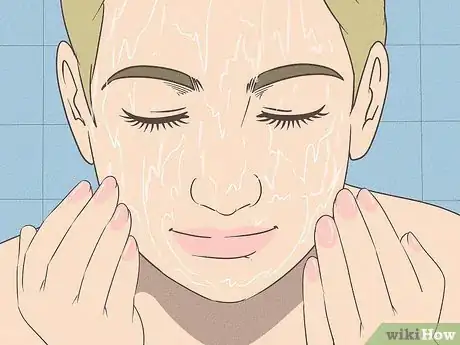

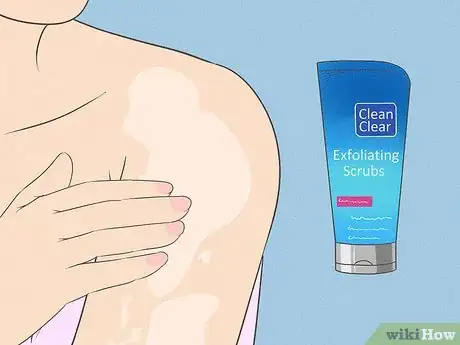
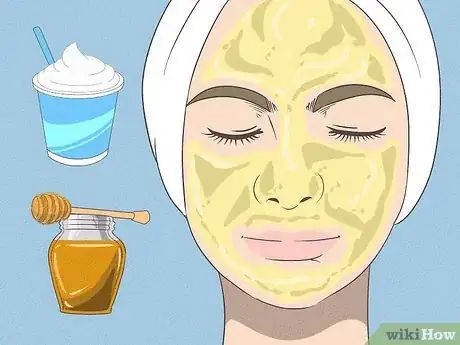
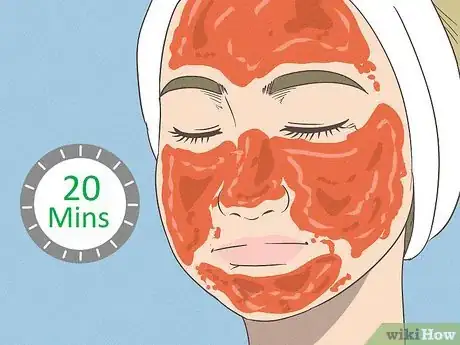
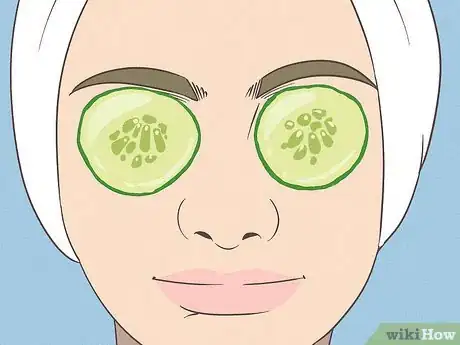
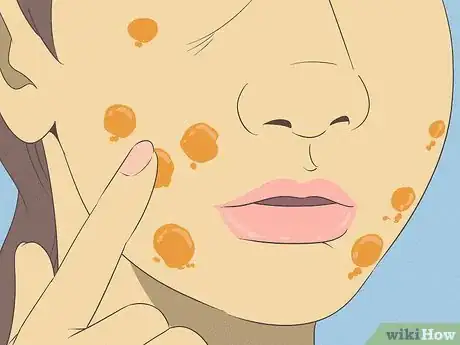








-Step-12.webp)






-Step-13-Version-3.webp)








-Step-12.webp)




































